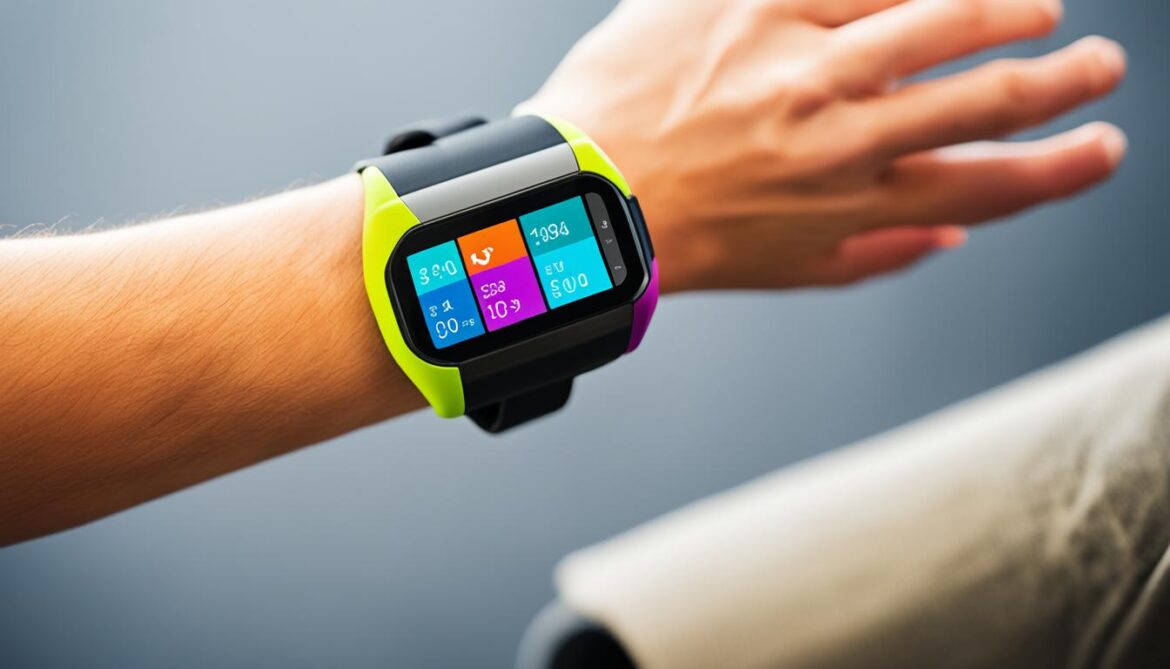Tracking your progress in health and fitness is crucial. Many only look at the scale, but this isn’t always best. Weight changes daily due to water and digestion. So, what other ways can you monitor your success?
Look at how your clothes fit instead of just the number on the scale. If they’re getting looser, that’s a good sign. It shows your body is changing. Also, keep a workout calendar. Jot down what you do and how hard you work. This helps you see progress clearly.
Notice if you’re sleeping better or have more energy. These are signs your workouts are paying off. Work on getting stronger and going longer. Set goals. It’s a great way to see and feel your improvement.
Measure more than just your weight. Check your waist size or body fat. These details offer a fuller picture of your health journey.
Take progress photos too. It’s hard to see small changes day to day. But comparing photos over time can really show your progress.
Use these tips to watch your progress closely and keep moving forward on your fitness path. It’s about more than what the scale says. It’s about feeling better and healthier.
Key Takeaways:
- Tracking progress is essential for staying motivated and focused on your fitness journey.
- Alternative methods of tracking progress include noticing how your clothes fit, keeping a calendar, and measuring other health improvements.
- Increasing strength and endurance goals can provide a sense of accomplishment and motivation.
- Tracking numbers besides weight, such as body measurements, can give a more holistic view of progress.
- Don’t forget to take progress pictures to visually see your improvements over time.
Importance of Setting Goals and Tracking Progress
Setting goals is key for keeping motivated and hitting targets on your fitness path. It gives you a clear aim and way forward. By setting goals, you figure out what you want and how to get there.
Two primary goal types are outcome and performance goals. Outcome goals pinpoint certain results, like losing weight or changing your body. They help you see if you’ve succeeded. Performance goals, however, are about bettering activities, such as running faster or doing more push-ups.
It’s wise to set SMART goals. This means Specific, Measurable, Achievable, Relevant, and Timely. Following the SMART framework ensures your goals are clear, trackable, and in line with your overall plan. Plus, they have a deadline.
Goals are more than just dreams. They are the steps that turn your fitness wishes into reality.
Tracking your progress is as important as setting goals. It lets you know if you’re headed in the right direction. It also helps you see if you need to change your exercise routine. This process keeps you focused and driven.
You can track progress in many ways. Measure your body fat or check your heart rate for heart health. Also, see how your muscles and flexibility improve over time.
Both setting goals and tracking progress are vital for hitting your fitness targets. Goals give you something to aim for. Progress tracking keeps you on the right path. It helps you know when and how to adjust. This way, you can keep going and celebrate as you reach your goals.
Setting SMART Goals:
- Specific: Be clear about your goal. Instead of “get fit,” say, “run for 30 minutes nonstop to boost endurance.”
- Measurable: Make goals you can measure. For instance, “lose 10 pounds” or “add 20 pounds to my bench press max.”
- Achievable: Choose goals you can reach. Difficult but doable goals are best. Unrealistic ones can be discouraging.
- Relevant: Your goals should tie into your fitness dreams. They should move you closer to what you want overall.
- Timely: Set a finish line for your goal. A deadline pushes you to work consistently and stay committed.
By setting and tracking SMART goals, you set yourself up for fitness success. Focus on the journey as much as the outcome. Take the time to make meaningful goals and follow through. Your fitness dreams are closer than you think!
Various Methods for Tracking Progress
Measuring your fitness progress can be done in many ways. Each method looks at different parts of your health. These ways help you see how you’ve improved. It’s important to keep an eye on these trends to keep getting better. Here are some top ways to track your fitness journey:
1. Body Composition Measurements
Body composition measures your body’s makeup, like muscle and fat. Knowing your percent body fat helps see if you’re getting fitter. It’s key for understanding how your fitness routine is working.
2. Resting Heart Rate
Your resting heart rate shows how fit your heart is. A lower rate means your heart is healthier. It also lets you know if your workouts are too hard on your body.
3. Heart Rate Variability
Heart rate variability looks at changes in your heartbeat intervals. It helps understand how your body reacts to stress. Keeping an eye on HRV can improve your training for better fitness.
4. Cardiorespiratory Capacity (VO2max)
VO2max measures how well your body uses oxygen during exercise. It’s a good sign of your heart and lung health. By checking your VO2max, you can see how fit your body is and make improvements.
5. Muscular Endurance Measurements
Testing how long your muscles can work, like with push-ups, shows your stamina. It keeps track of how strong and lasting your muscles are getting.
6. Strength Measurements
Keeping an eye on your muscle strength is important. It might mean lifting heavier weights or seeing how strong you are in certain exercises. This shows if your strength training is working.
7. Flexibility Assessments
Flexibility tests, such as the FMS, check how well your body moves. They show if you might get hurt because of tight muscles or joints. Checking flexibility helps ensure you can move well and avoid injuries.
Use these ways to track how you’re doing on your fitness journey. Be sure to check and record your progress often. This helps you see real improvements and figure out what changes you need in your routine. Every tracking method tells a part of your fitness story. They give you insights on your journey towards better health.
Conclusion
Keeping track of how you’re doing is key to keep pushing forward and reach your fitness aims. It’s not just about the number on the scale. This method lets you truly grasp your fitness trip. By setting SMART goals and using different progress-tracking ways, you can keep improving your routine.
Measurements like body composition, heart rate, and how well you do in exercises offer great insights. They help you see your progress clearly, stay happy about your wins, and keep going strong.
It’s important to know that getting fit isn’t always a straight line up. There can be times when you see less progress or even setbacks. But, if you keep track, you can notice what works best for you. This way, you can make smart changes and keep moving forward. Always remember, the journey itself is a victory, and every little step counts.
FAQ
What are some alternative ways to track my fitness progress?
You can track your fitness progress in several ways. Watch how your clothes fit and keep a workout calendar. Also, look for other health changes and check if you’re becoming stronger and can work out longer. Remember, the scale isn’t the only way to measure progress.
What are the different types of goals I should set in my fitness journey?
In your fitness journey, set two kinds of goals: outcome goals and performance goals. Outcome goals aim for certain results, like losing weight. Performance goals focus on improving how you do specific exercises or activities.
How can I effectively track my progress in my fitness journey?
To effectively track progress, use measurements like body fat and heart rate. Check your cardio and muscle strength as well as flexibility. This gives you a well-rounded view of how you’re doing.
Why is tracking my progress important for my fitness journey?
Tracking your progress keeps you motivated and helps you reach your goals. It shows more than just weight changes. It lets you see the whole story of your fitness journey.
Source Links
- https://www.fulcrumfitness.com/blog/goal-setting-progress-tracking
- https://sublimereflection.com/tracking-your-fitness-progress/
- https://shapescale.com/blog/tracking/guide-tracking-progress/


